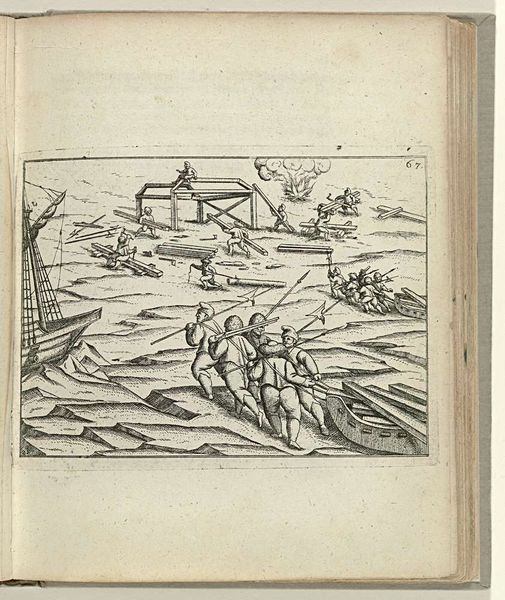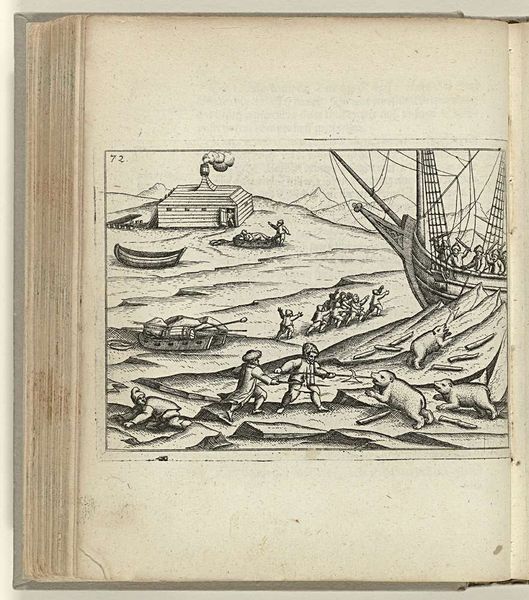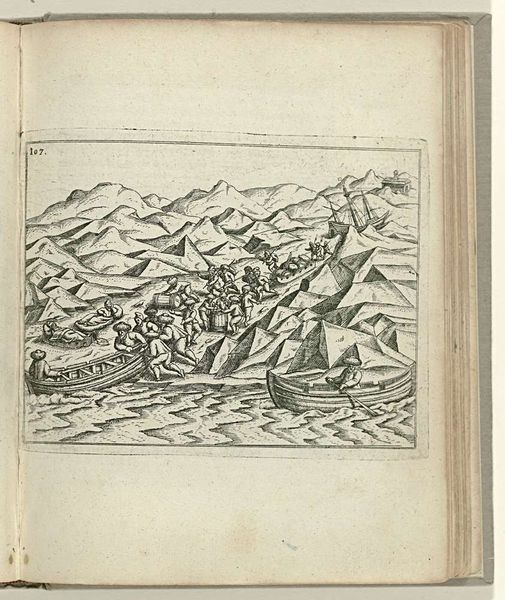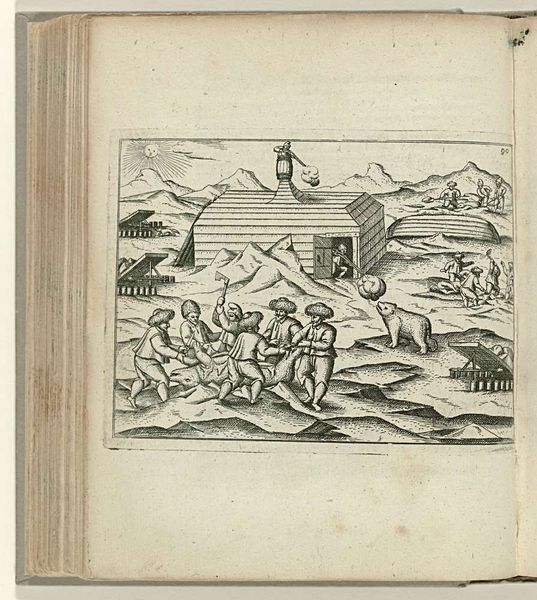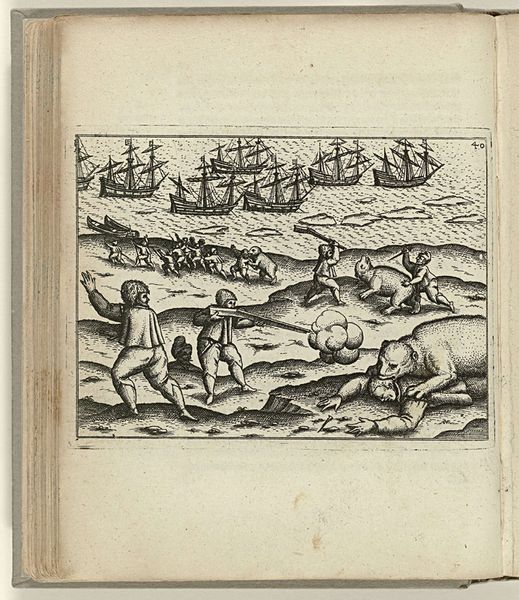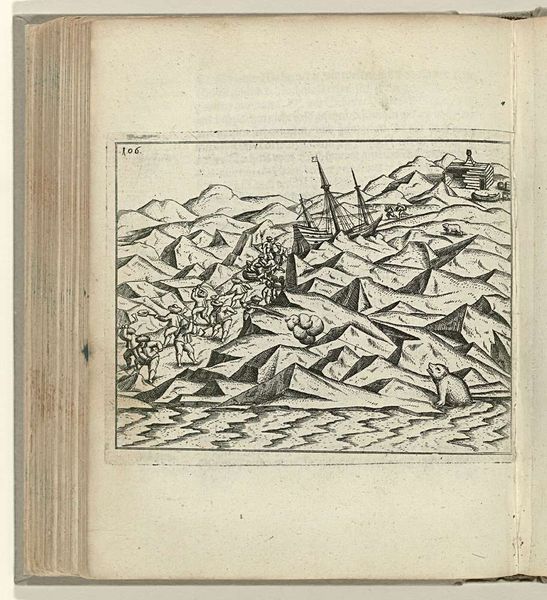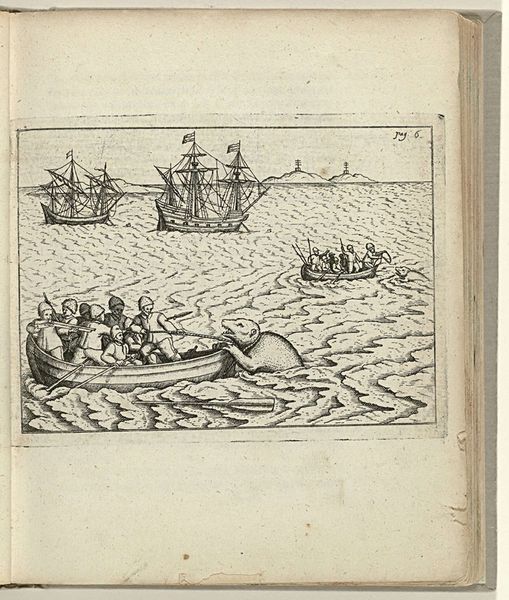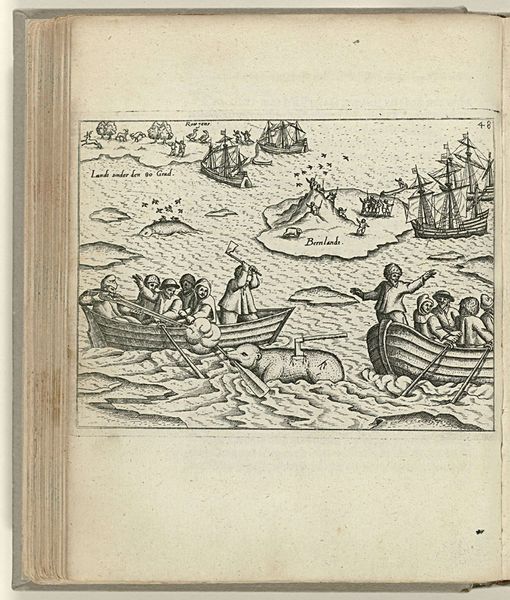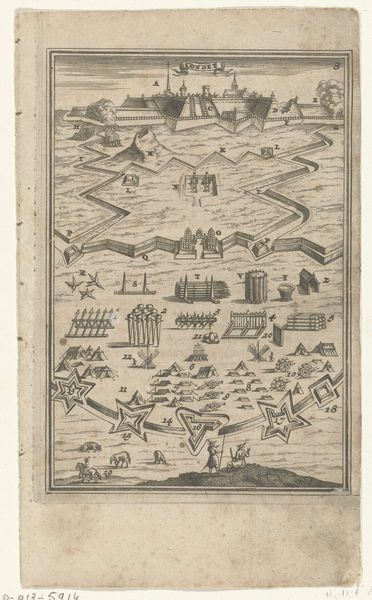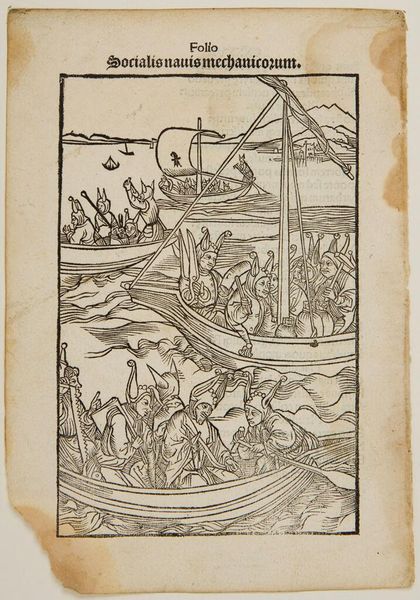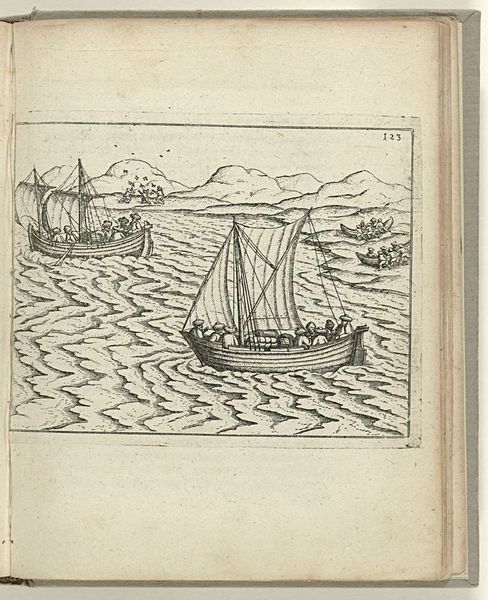
drawing, paper, ink
#
drawing
#
narrative-art
#
landscape
#
paper
#
ink
#
ancient-mediterranean
#
genre-painting
Dimensions: height 105 mm, width 145 mm
Copyright: Rijks Museum: Open Domain
Curator: This engaging piece before us is titled "De sloepen op een brekende ijsplaat, 1597," or "The Sloops on a Breaking Ice Sheet, 1597". Executed with ink on paper around 1598, its authorship is unknown and it currently resides at the Rijksmuseum. Editor: There’s something unsettling about this scene; the cramped, linear strokes make me think of instability, an almost frantic energy. The tonal contrasts certainly emphasize that, no? Curator: Indeed. Let's consider the landscape as a construction. See how the composition relies on a tension between the orderly, almost rhythmic, repetition of the wave-like patterns of ice. That seems to emphasize an uneasy tension to contain the narrative event. Editor: I see what you mean. The repetitive wave patterns feel more like a field of cracked earth, making it look like the land is fighting to survive. And then, we see boats stuck. But I cannot but read this in cultural context: ice carries meanings of both danger and opportunity to those who inhabit that region, an endless struggle. Curator: And if we consider the iconography of boats, they always seem to operate on the edge of somewhere new; they're a symbol of departure, or in some cases perhaps lost hope. The lack of tonal variance across the paper itself flattens out all sense of depth or receding horizon. Editor: Right, it collapses spatial boundaries. Symbolically, this could show our limited grasp of a very complex world. It presents what must be seen as daily strife and hardship, emphasizing, the role and fragility of our relation to our environment, which is something everyone can understand. Curator: What fascinates me is the way in which the formal arrangement mirrors our emotional responses. Editor: True, its crude detail emphasizes its value as a raw cultural document. Curator: It is quite an artifact, giving us the chance to think through an alternative perspective using its visual and contextual symbols. Editor: Exactly, seeing both how it impacts us visually but what its symbolic role reflects on ourselves.
Comments
No comments
Be the first to comment and join the conversation on the ultimate creative platform.

